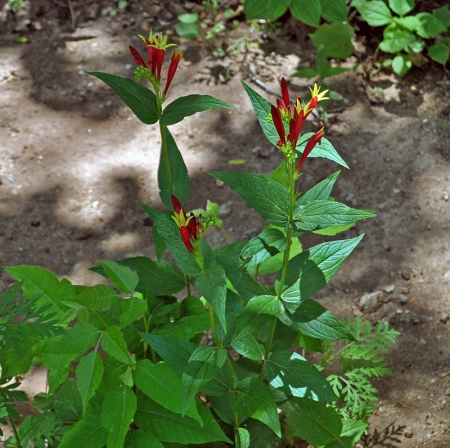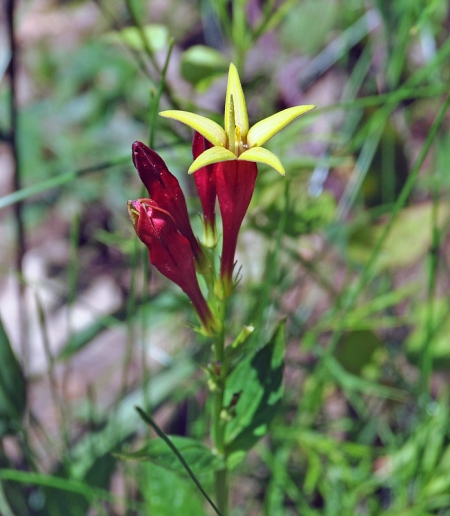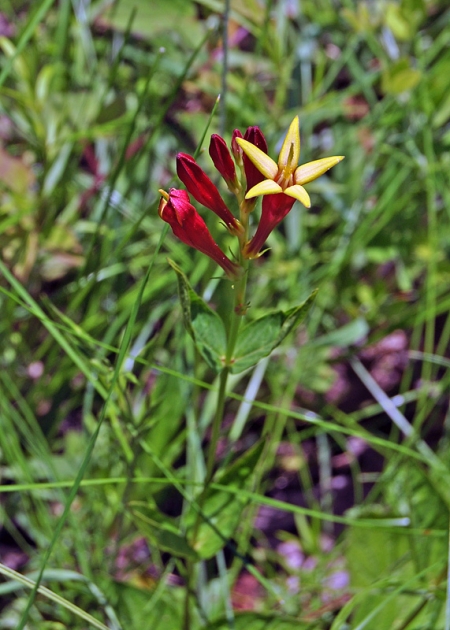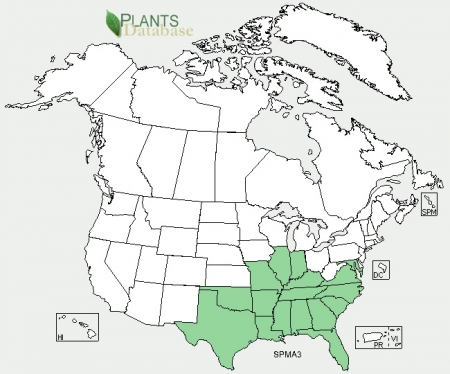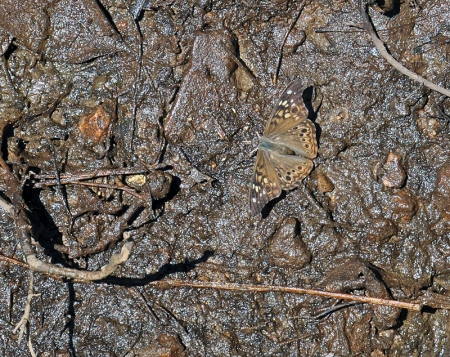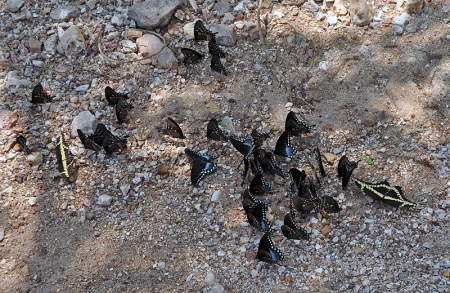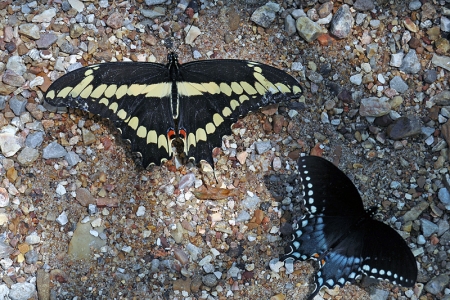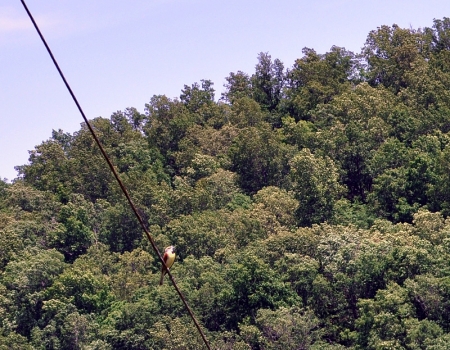when you cross Indian Paintbrush with Fire Pink? Indian Pink, of course. Well, ok, not really. But there is such a plant, as I recently discovered.
I had driven to Gooseneck back on Memorial Day weekend, hoping to find a Cambarus diogenese outside it’s burrow since the colony was covered by a couple of feet of now falling flood water. The crayfish were a no show, but on the drive in, there was a wildflower I didn’t recognize growing alongside the road near a low-water concrete slab crossing of a small hollow. So on the way back out, I naturally stopped to take a look.
As you can see, it’s a very distinctive looking flower, but I had no idea what it was. I make no claim to be a great botanist by any means, but I’ve seen most of the early wildflowers in the area and those that I haven’t actually seen, all those hours looking at field guides usually pay off by offering at least a clue. Not this time. It took some creative searching with Google Image to identify it as Spigelia marilandica, or Indian Pink. Also commonly known as Woodland Pinkroot, it reaches a height of 12-18 inches and occurs across the greater southeastern United States. In Missouri, it’s only found in a handful of counties in the southeast corner of the state minus most of the lowlands. The ones I had found were in Ripley County, but just barely – Gooseneck Road crosses back and forth from Carter to Ripley County several times.
Nearby, was a Hackberry Butterfly (Asterocampa celtis) sipping from the moist mud and even though I have quite a few photos of the species, I had to take a few more.
Back near the low water bridge on Big Barren Creek was another large group of butterflies, all also very intent on sucking the moisture from the mud. Almost all of them were Spicebush Swallowtails (Papilio troilus), but there was one Tiger Swallowtail (not in the photo) and two well worn Giant Swallowtails (Papilio cresphontes.) Unlike the Hackberry Butterfly, I don’t have many shots of the Giant Swallowtail, so again, I had to stop for photos.
And finally, right across from the only house near the road, was a Dickcissel. You rarely see these in this part of the Ozarks, but there he was, sitting on the guy wire from a power pole singing his heart out, thirty feet from the truck. And naturally, I had left the long lens at the house, because I was only expecting to be shooting crayfish (which I didn’t photograph at all.) He posed quite cooperatively, something I’m sure he wouldn’t have done had I had the longer lens along. I shot away with my 18-55mm and he was still there as we drove away.
Before you judge this photo too harshly (I know it’s crappy,) remember what it was taken with, that it was only intended to document the Dickcissel’s presence and you can tell what kind of bird you’re looking at. ![]()
